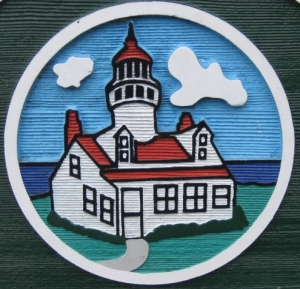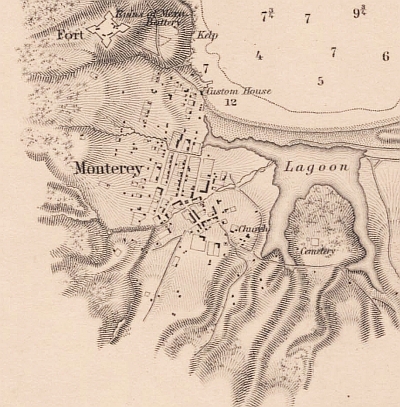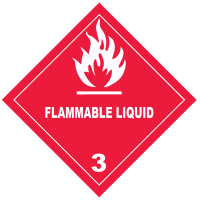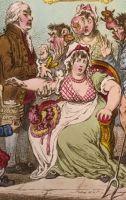TEACHER RESOURCES
Primarily for 4th grade and above

Quick Links:
Color the PPLH - simple coloring page
Color the PPLH - smaller x 4 page
Monarch Butterfly - simple coloring page
Emily Fish and RLS portraits - brief info on back
Simple maze w/ teacher guide
Guides

Most of this page is concentrated on the early keeper time period. People were largely self sufficient and took care of each other. Most items were recycled by necessity. No plastics! But no antibiotics, anesthetics, pesticides or fertilizers either.
Youtube
Story of the Point Pinos Lighthouse (8:15), The August 16, 2020 Storm (2:08),
Mrs. Emily Fish and the 1906 Earthquake (5:34), [PDF], The Posse (10:31), [PDF],
Social Media: Facebook has the latest images, videos and news. And Google Maps has reviews, etc.
California Teaching Standards: H & S SCI FRAMEWORK FOR CA PUBLIC SCHOOLS : 4th grade, PDF
Survival Questions

Introduction: Why comparing current times to times past could offer insights and how to use this resource.
See QUIZZES page.
Monterey in 1852

Monterey is an old Spanish town, situated in a cove, on the south-western side of the bay of Monterey, and surrounded by lofty hills, which are covered with towering pines. It is protected, partially, by Point Pinos from the south and south-west winds; and, by lying near the point, vessels may be tolerably safe from the north-west storms. When the American army took possession of this city, it became the capital of the country. The houses then standing were few, and were constructed of adobes, the universal building material of the native Californians. Like those of other Mexican towns, the inhabitants of Monterey were a dancing, gambling people; but the population was small, not exceeding three or four hundred. After the conquest, the tide of emigration reached this city to some extent; but its remoteness from the great object of attraction rendered it an indifferent rival to San Francisco. The town being situated under high hills, during the rainy seasons its streets are rendered almost impassable by the torrents of water which come rushing down from the surrounding elevations. Its present population is about 2000, among whom are many Americans, who are too apt scholars in learning the Californian vices of gambling and drinking. These, and less creditable vices, are far too prevalent in all the cities, villages, and settlements, old or new, in the state, for the moral health of the body politic. Monterey is seventy miles south from San Francisco. (See History of California below)
Remember, the City of Pacific Grove did not yet exist, nor even the Methodist retreat camp. Only a five mile sandy path to the lighthouse to bring in supplies on mules.
Local Natural History - seen on PPLH grounds
This section needs A LOT OF HELP to bring it up to acceptable standards.

Birds Monterey is on a major migratory path and is a highlight area for birders.
Bugs We have em. Not as many as when I was a kid, but they are here!
Lichens on stones, trees, and buildings. Often unnoticed and ignored. The hanging species help capture fog and dew and move it to the ground for plants, trees and other creatures. They help break down rocks into soil so other species may thrive.
Mammals not including us of course. Deer, elk and wild boar fed many in our early years, as did squirrels, and even gophers.
Plants images and Wiki links to each species. Poison oak has been cleared for those of us who are allergic to it.
Each of the pages above has specific links to information for that group and species. PGMNH has quick guides for birds/butterflies and a larger guide for birds, for purchase.
Turkeys, pigeons, sparrows, rats and pigs (feral and as livestock) came after California became a state, as 'introduced' species.
Out of Copyright Books

Treasure Island, PDF
1883 by Robert Louis Stevenson, defined the stereotype 'pirate' character from that point on for novels, movies, costumes, etc. Novel - Wiki. Family designed and built lighthouses in Scotland, RLS visited PPLH and met Tiburcio Vasquez. Wrote Treasure Island while in Monterey.
History of California, PDF
1854 by E.S.Capron, huge amounts of cultural data. A must read for understanding this time period from a first person point of view.
Treatise on Bread, PDF
1937 by Sylvester Graham. Healthy food was not only a recent concern. Though no recipes, this is a empirical treatise on what is healthiest with the materials that were available. Very similar to what nutritionists proclaim today, without extensive scientific studies and equipment.
The cook's own book ... , PDF
1854 by a Boston Housekeeper Miss Leslie. Practical advise. Toxicity of metals (use enameled cookware). How to prepare/cut meat, poultry, etc. Recipes and descriptions of ingredients in alphabetical order. Yumm, anchovy butter! Confectionery, violet marmalade! Desserts, cakes, puddings, etc.
Peter the Whaler, PDF
1851 by William Henry Giles Kingston. A popular adventure book for boys. Kingston is mentioned in the Treasure Island preface. Whale oil was the first fuel used in our lighthouse lamp. Whaling was critical to the economy of early Monterey and did not end until 1970 in Moss Landing harbor. NOTE: this book reads fine on a laptop/desktop, but for some reason has problems on tablets. (110MB)
Where to find out of copyright books:
Open Library - PG Free Reading - Gutenberg - Libby App
Pacific Grove Library Catalog

Bandido
2010 by John Boessenecker. About the bandit Tiburcio Vasquez, the 2nd Zoro of the Californeos of the time. John wrote 11 novels about historical figures of the old west. This is an academic book that can get very dry at times, but huge amounts of cultural information mixed in.
Treasure Island
Several versions, large print, graphic novel, Muppet, videos. PGPL Search
Moby Dick
1851 by Herman Melville THE classic tale of obsession and whaling. Required reading by most high school students. Read on-line here.
The story of lighthouses
1965 by by Mary Ellen Chase (1887-1973); wood engravings by Erwin Schachner. Meant for children, but a lot we can learn from her knowledge of building a lighthouse in difficult locations and also first hand experience teaching the children of keepers who could not go to school on land.
Stevenson family of lighthouse builders
1999 By Bella Bathurst, RLS did help engineer and build one lighthouse with his family in 1872 Dhu Heartach
Monterey Bay area : natural history and cultural imprints
1996 By Burton L. Gordon, cultural and ecological interactions of people and sea/land species. Abalone were harvested for the shells, otters for their fur and whales for their fat.
Navigation

Maps, ~200BC accurate maps saved lives, even now. Don't leave home without it.
Compass, ~200BC crude magnetized needle on a cork floating on water.
Astrolabe, ~200BC used to determine an angle of an object in the sky with respect to the horizon. Navigation use is for latitude only.
Modern Compass, 700AD permanent magnetic needle on a gimble to move with rocking ship.
Kamal, 880AD used to determine the elevation of the polestar and hence latitude.
Mariner's astrolabe, 1295AD position fixing using stars and other celestial bodies on a rocking ship.
Telescope, 1608AD in marine navigation, this is usually for 'sight of land' charting of position, such as would be done if a pilot was within sight of two lighthouses. A telescope extends sight to a further distance.
Sextant, 1730AD a modern professional sextant and experienced user, with an accurate clock, and tables, can position a ship within ~500ft of true position. Experienced amateur within 3 miles. Subject to visibility. Fog. storms, etc. are not good.
Seagoing Chronometer, 1764AD critical instrument that once you know latitude and have a good map, you can determine longitude and therefore an accurate position. Changed everything and much sought after. Having a 'clock' that could withstand temperature, humidity and constant motion on board a ship was not an easy task.
Navigation Lights, 1838AD required by maritime law, essential to know how an oncoming ship is directed in relation to you.
Prime Meridian, 1884AD defined as 0° longitude for map and navigation purposes.
Gyrocompass, 1885AD magnetic compasses have the problem that magnetic north is not the same as true north and thus will be off varying amounts, depending on longitude. They can also be fooled by nearby magnets or metal hulls (not a problem with wooden clipper ships). A gyrocompass depends on rotation of the earth's axis and is therefore more accurate.
GPS, 1978AD allowed accurate positioning and speed of ships. In civilian research used for ecology studies (accuracy up to one centimeter, ~ 1/2 inch). ALL electronic instruments can and will fail at some point (or be jammed by an enemy). The Navy requires presence and experience with sextants as a backup or for confirmation.
See also: Dead reckoning essential in warfare for targeting and/or capturing another ship.
Modern NOAA chart of Monterey Bay: Chart of Monterey Bay and Closeup
Safety

There were no rules or regulations at the time of the first keepers. People depended on 'common sense' and experience (and had scars or missing pieces to prove it). Most people learned their trade by working with someone who was more experienced. No OSHA, building codes/permits, worker safety, no rules on medicines or use of hazardous materials (think lead and asbestos). Coca Cola once had actual cocaine (a stimulant), caffeine is the safer/legal replacement now. Heroine was 'mothers little helper' to quiet children. Mercury was used to help extract gold from crushed ore, make hats (mad hatter syndrome) and ended up polluting waters and our bay. Photography used ether (extremely flammable, can cause loss of consciousness), nitrocellulose (flammable, used in wet plates during the Civil War), mercury vapor (poisonous on contact or inhaled, in Daguerreotypes) and many other toxins.
Whale Oil flammable, smelled, used for lamps, soap, margarine, lubricants. Became too expensive when their numbers went down, eventually putting them into protected status to prevent their extinction.
Lard like whale oil, mainly triglycerides, used in cooking and food, but if liquefied ahead of time, it can be burned in a lighthouse lamp. Much cheaper than whale oil, but very annoying to use for the keeper because of the melting required to use.
Kerosene sometimes called mineral oil. Flammable, smelled, used for lamps, cook stoves, aircraft fuel (and early automobiles). Like the above whale and lard oil, produce a lot of soot, which must be cleaned from the lens daily. Storage outside of living areas important. Mixed with air, it is as explosive as gun powder. Adding a mantle increased the light intensity significantly. Higher risks of cancer, asthma, tuberculosis (common at the time), cataracts, and harm to pregnancy.
Asbestos excellent insulator and fireproof. Before the health effects were known, it was used everywhere in homes, businesses, gloves. Extremely hazardous material regulated by OSHA, EPA. Disposal is complex and expensive.
Lead helped to bring down Rome by their using it for pipes (easy to mold and seal pipes). California was a major supplier at the first keeper time. Used to make lead type for printing presses. And of course in ammunition, fishing, counter weights, molded toys for children. Lead exposure (even by touching) in children will cause mental development problems. Used in paint (or gasoline) the ingestion (or inhalation) hazard will do the same. Disposal and cleanup costs are high in our time.
Gunpowder used for defense in guns and cannons, in medicine to cauterize wounds, fireworks. Easy to make from local materials. Low explosive, but the smoke cloud often gave your position away in a battle and blocked your vision. The ash left over absorbs water and is corrosive to equipment, requiring constant cleaning and maintenance.
Pre regulations, hazardous materials were often buried in the ground or released into waterways. Only to present hazards later. (think buried radioactive waste from our time)
Diseases

Life expectancy was 34 in 1850 due primarily to infant mortality (and female deaths during childbirth), higher murder rates, toxins, etc. No antibiotics or pesticides. Very few people ever got dementia, type 2 diabetes, heart disease/stroke, and/or cancer, probably because few lived that long. Native populations were devastated by smallpox and tuberculosis because of the lack of any natural immunity.
Cholera
Found naturally in shellfish and plankton, transmission due to poor sanitation and contamination from infected fecal material in drinking water supply.
Smallpox
Dates back to 3rd century, major cause of death in indigenous populations as Europeans colonized the Americas. George Washington made vaccination compulsory in troops during the Revolutionary War, even though at the time there was a 1-3% death rate from the vaccine itself. Better than the 50% rate for the unvaccinated.
Typhus
Spread by lice, fleas, and mites (no insecticides then). No vaccine. a.k.a. "camp fever" major cause of death to troops during the wars of the time.
Yellow fever
Spread by a virus transmitted by mosquitoes. Entire cities would routinely be evacuated in the summer mosquito season, including the US capital.
Plague
Bacterium carried by rodents with fleas who bites humans. Airborne and contact variations. Still occasionally found in California wild rodent population. Long world history of plague deaths. a.k.a Black Death, Bubonic Plague.
Scarlet Fever
Children between five and fifteen are most common. In the throat and spread by coughing and sneezing. a.k.a strep throat. Long history.
Tuberculosis
a.k.a. Consumption. Caused by the bacteria Mycobacterium tuberculosis. 90-95% remain asymptomatic, spread through coughing/sneezing/spitting. Very common disease of the 'old west' times. A negative TB test required of all teachers and health care workers.
